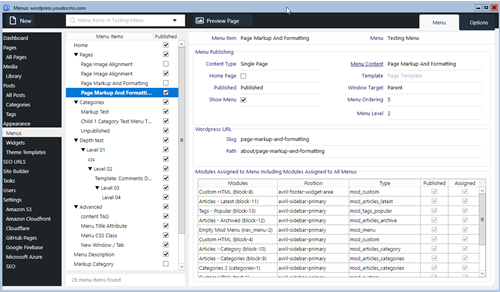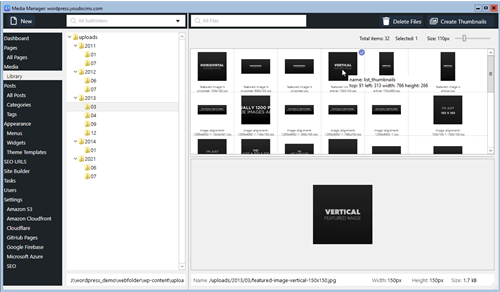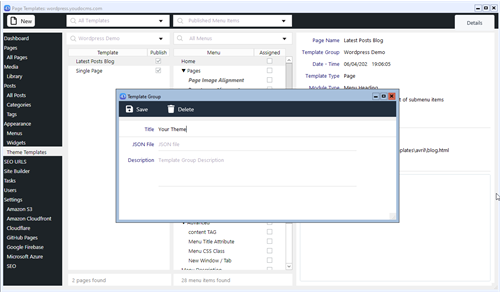WordPress Example
Pages, Posts and Categories
Check your pages, posts and categories have been imported. In the post preview TinyMCE the layout should be the similar to WordPress. If the fonts look different check the path to TinyMCE in CMS Settings. If you are using the block editor in WordPress this is not supported. 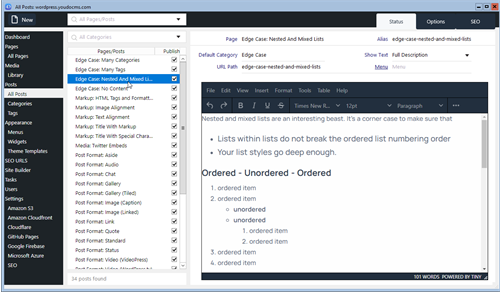
The imported content should have the same relations to menus and widgets as the original WordPress site.. Posts should be allocated to the same categories and tags should be related to the same posts and categories. WordPress pages should have the same hierarchical structure as the original WordPress site. YouDoCMS has an additional option for a default category where an post belongs more than one. Every post must have a default category this is displayed at the top of the category list when editing. To edit a page, post, category or tag double click to open the edit window. YouDoCMS uses TinyMCE which was the original WordPress editor until until the recent introduction of the block editor. 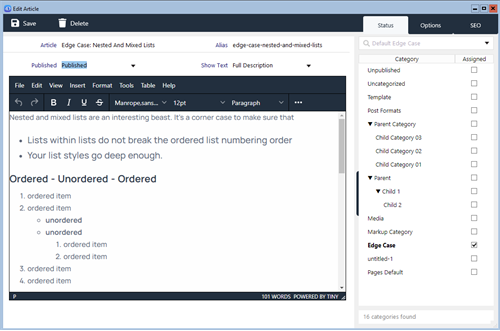
Menus and Widgets
Menus
When you import from WordPress both menus, menu locations and menu items are replicated within our database. The hierarchical menu structure is preserved together with the published status. A subset of the WordPress options are imported as parameters for YouDoCMS as many do not apply to a static site generator.
Menus retain their status published, unpublished, trashed etc. and each menu can be re-organised using drag-and-drop. YouDoCMS menu manager is slightly different to WordPress in that you create a new menu then chooses the type i.e page post or category.
A new menu item can be assigned to an page, latest posts, category blog, list of categories and the edit menu screen allows you to quickly choose the category or page to allocate to the menu item.
Widgets
Following widgets are imported; breadcrumbs, menus, single page/post, archived posts, category lists, featured pages, custom HTML, lists of categories, and tags. A subset of widget parameters are imported. Users should check the options for each widget after import for the correct sort order and number of posts to display.
Widgets are imported with the same location as the WordPress template.
.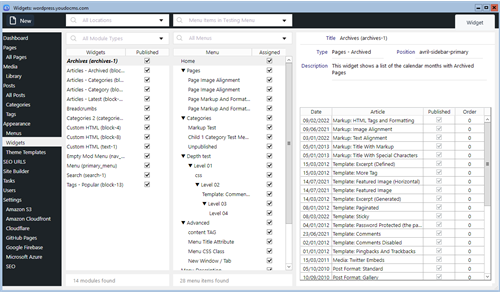
Media Manager
Images are downloaded from your WordPress site and the folder hierarchy is recreated on your local machine. Typically WordPress stores images in the wp-content/uploads folder and these are organised by year date. The local folder defined in settings is used by the TinyMCE editor to link the images embedded in content with the same path.
The Media manager can be used to create thumbnails of four different sizes to use for responsive images. The responsive image default format is defined settings - SEO. When editing with TinyMCE you can navigate and select an image to insert into content exactly the same as WordPress .
WordPress Template
From the original WordPress site create a copy of each page type e.g. a single page or latest posts. Create a template by right clicking the page and choosing display source then copy and paste the source code into a text editor. Save this file with .html extension to the template's folder defined in your site settings. Use a naming convention that identifies the type of page ie latest_posts.html or page_sidebar.html (a single page with widgets in sidebar). This will make it easy to assign to menus and urls for the static site generator. A simple blog site will probably only need 2 or 3 different page types.
Add Templates
Create a new template group (same name as WP theme) then add the templates to the group. For details See Template Manager
